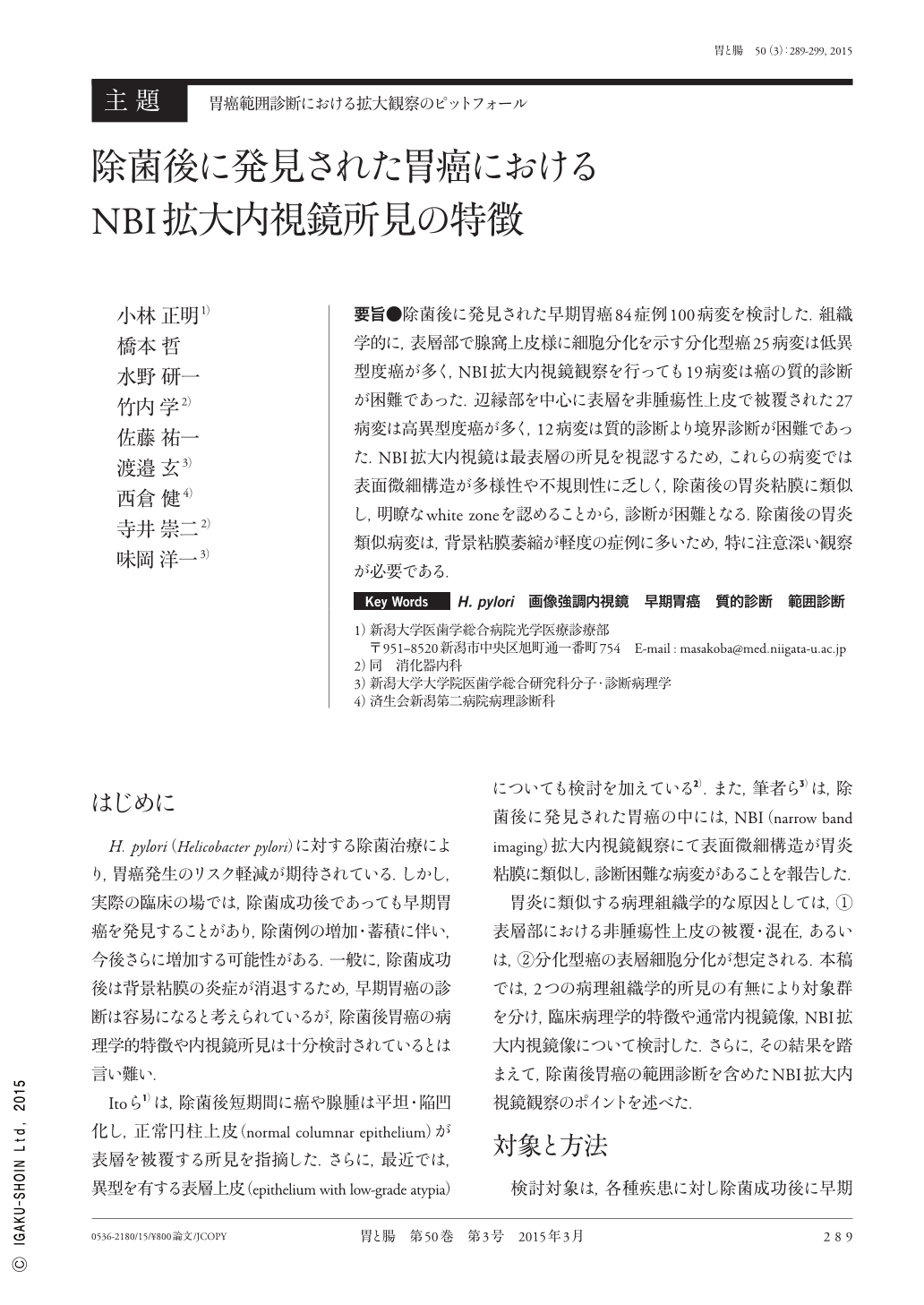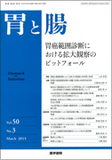Japanese
English
- 有料閲覧
- Abstract 文献概要
- 1ページ目 Look Inside
- 参考文献 Reference
- サイト内被引用 Cited by
要旨●除菌後に発見された早期胃癌84症例100病変を検討した.組織学的に,表層部で腺窩上皮様に細胞分化を示す分化型癌25病変は低異型度癌が多く,NBI拡大内視鏡観察を行っても19病変は癌の質的診断が困難であった.辺縁部を中心に表層を非腫瘍性上皮で被覆された27病変は高異型度癌が多く,12病変は質的診断より境界診断が困難であった.NBI拡大内視鏡は最表層の所見を視認するため,これらの病変では表面微細構造が多様性や不規則性に乏しく,除菌後の胃炎粘膜に類似し,明瞭なwhite zoneを認めることから,診断が困難となる.除菌後の胃炎類似病変は,背景粘膜萎縮が軽度の症例に多いため,特に注意深い観察が必要である.
We evaluated 100 early gastric cancers detected in 84 patients who received successful Helicobacter pylori eradication therapy. Narrow-band imaging with magnifying endoscopy(NBI-ME)findings for gastric cancers after eradication were characterized by homogeneous and regular microstructure bordered by clear“white zone”, resembling the adjacent non-cancerous mucosa. Because NBI-ME is a special modality for enhanced visualization of microstructures within the superficial layer of cancers, such as“gastritis-like”appearance, it correlated with histological surface differentiation and non-neoplastic superficial epithelium. Moreover, surface differentiation revealed cytological maturation at the luminal surface layer of cancers. This finding led to difficulty in a qualitative diagnosis of cancer by NBI-ME(n=19, Figs. 3 and 4). Non-neoplastic tubules among and/or on the cancer tubules caused unclear demarcation of cancers (n=12, Figs. 1 and 2). To accurately diagnose“gastritis-like”cancers after eradication, careful surveillance endoscopy is recommended, particularly for patients with mild mucosal atrophy.

Copyright © 2015, Igaku-Shoin Ltd. All rights reserved.


